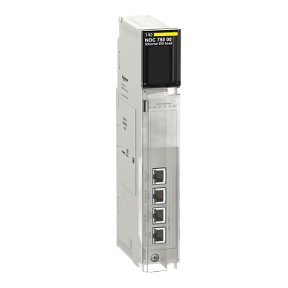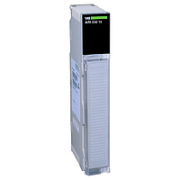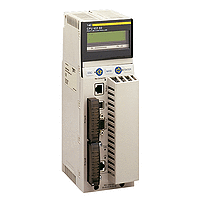170ADM54080 Modicon Momentum Modbus I/O module base
Original price was: $963.00.$740.00Current price is: $740.00.
“Upgrade your Modicon Momentum PLC with the Schneider Electric 170ADM54080, a durable Modbus I/O module base for seamless module integration.”
2 in stock
Free shipping on orders over $5000!
- Satisfaction Guaranteed
- No Hassle Refunds
- Secure Payments
Description
| range of product | Modicon Momentum automation platform. |
|---|---|
| product or component type | Modbus I/O module base. |
| group of channels | 1 group of 6 discrete inputs. 1 group of 3 discrete outputs. |
| discrete input number | 6 |
| discrete output number | 3 |
| number of port | 1 |
| communication port protocol | Modbus. |
| wiring mode | 2 or 4 wires. |
| discrete input logic | Positive |
|---|---|
| discrete input voltage | 120 V AC 47…63 Hz. 0…132 V AC. |
| input overvoltage protection | 200 V. |
| voltage state 1 guaranteed | >= 79 V. |
| voltage state 0 guaranteed | <= 20 V. |
| current state 1 guaranteed | >= 5.5 mA. |
| current state 0 guaranteed | <= 1.9 mA. |
| discrete output logic | Positive |
| discrete output voltage | 120 V 47…63 Hz. |
| discrete output current | 0.5 mA per point. 1.5 mA per module. |
| maximum voltage drop | <1.5 V 0.5 A at state on. |
| maximum leakage current | 1.9 mA AC, 120 V. |
| surge current | 30 mA |
| response time | < 12.3 ms, 60 Hz, from state 1 to state 0 in the in the input circuit. < 12.3 ms 60 Hz from state 1 to state 0 output circuit. < 12.5 ms, 60 Hz, from state 0 to state 1 input circuit. < 12.5 ms, 60 Hz, from state 0 to state 1 output circuit. |
| communication port support | RS485. |
| transmission rate | 9600 bit/s. 19200 bit/s. |
| data format | 8-bit RTU. 7-bit ASCII. |
| number of addresses | 0…247 |
| port timeout | 150 ms |
| marking | CE |
| electrical connection | 2 connectors for removable terminal blocks. |
| current consumption | 125 mA at 120 V. |
| net weight | 0.24 kg. |
| product certifications | CSA UL |
|---|---|
| protective treatment | TC |
| resistance to electrostatic discharge | 4 kV contact conforming to IEC 801-2. 8 kV on air, conforming to IEC 801-2. |
| resistance to electromagnetic fields | 10 V/m 80…1000 MHz, conforming to IEC 801-3. |
| ambient air temperature for operation | 0…60 °C. |
| ambient air temperature for storage | -40…85 °C |
| relative humidity | 95% without condensation. |
| operating altitude | <= 5000 m. |
| Unit Type of Package 1 | PCE. |
|---|---|
| Package 1 Length | 21.0 cm. |
| Number of Units in Package 1 | 1 |
| Package 2 Width | 30.0 cm. |
| Package 2 Height | 30.0 cm. |
| Package 2 Weight | 3.514 kg. |
| Package 1 Width | 17.0 cm. |
| Package 1 Height | 6.7 cm. |
| Package 1 Weight | 456.0 g. |
| Number of Units in Package 2 | 6 |
| Unit Type of Package 2 | S03 |
| Package 2 Length | 40.0 cm. |

 140AVO02000 - analog output module Modicon Quantum
140AVO02000 - analog output module Modicon Quantum 


